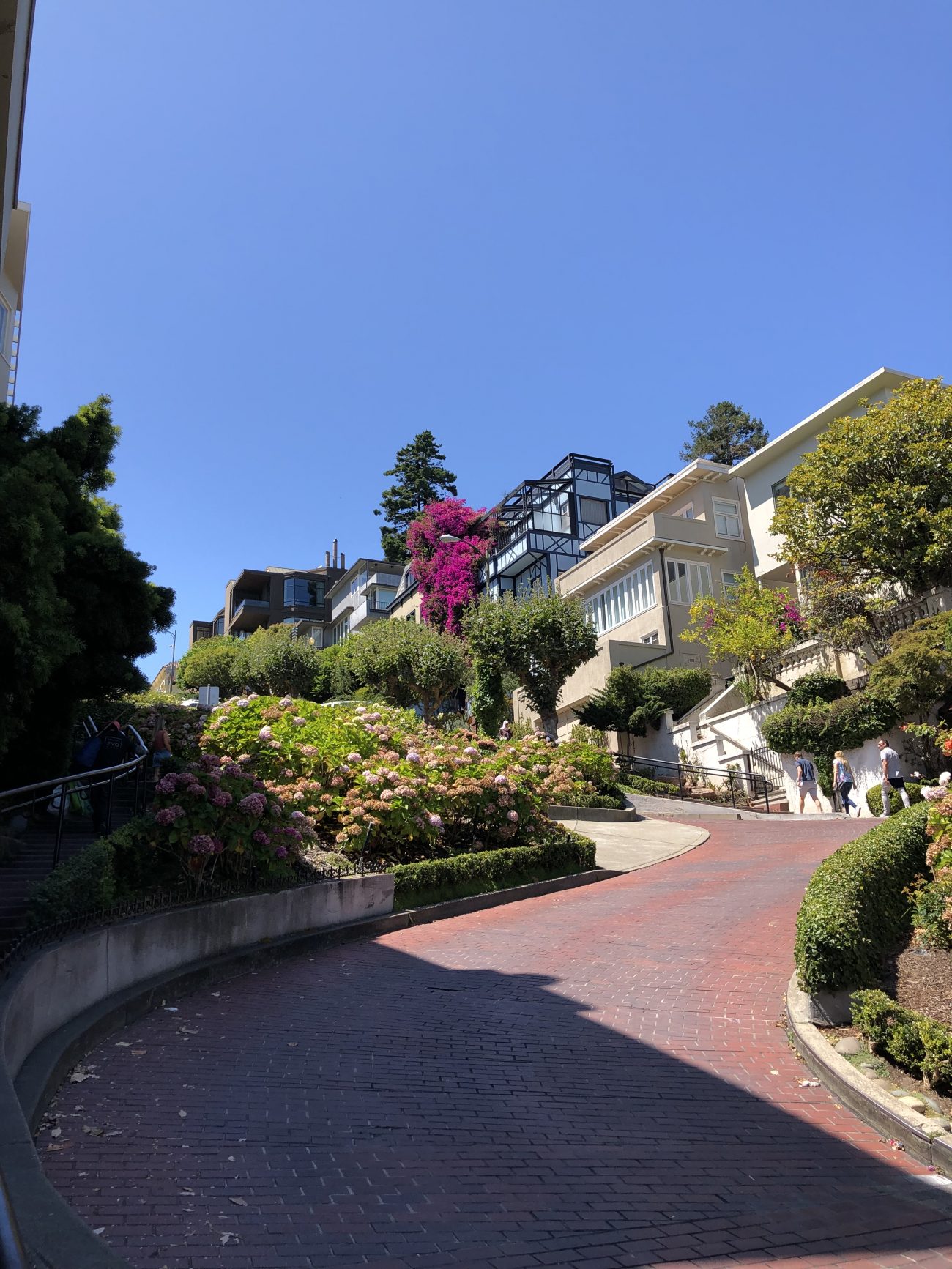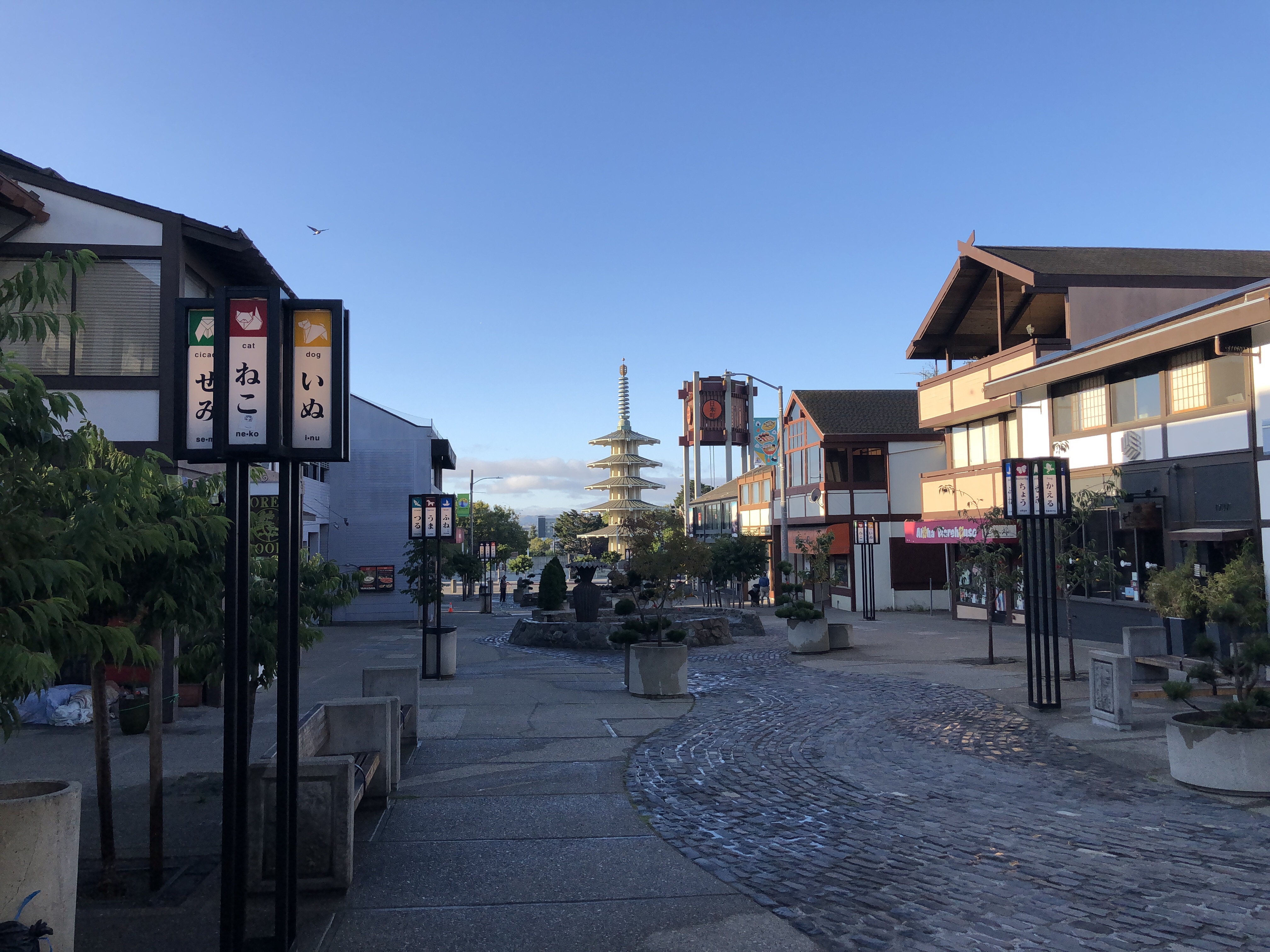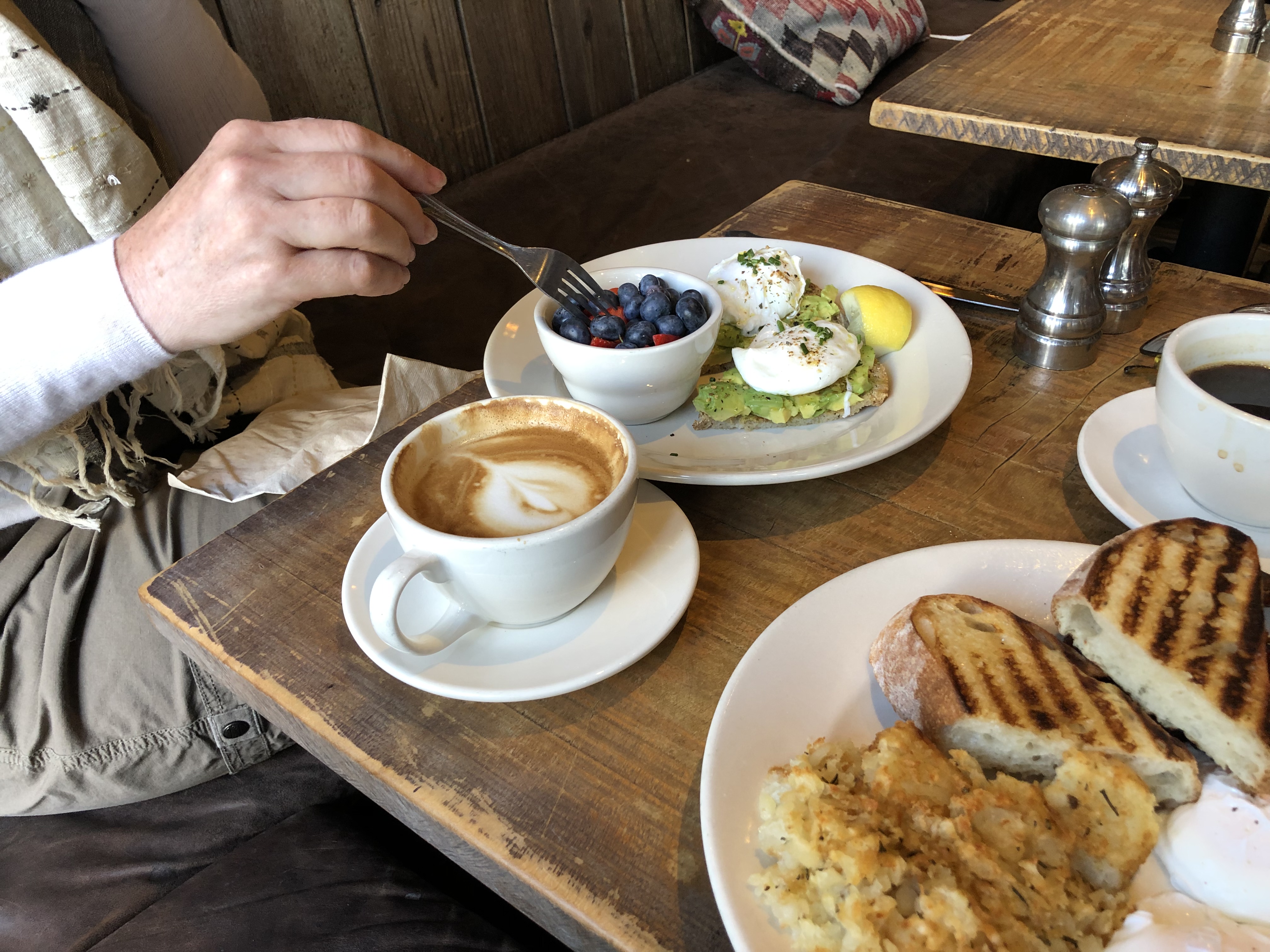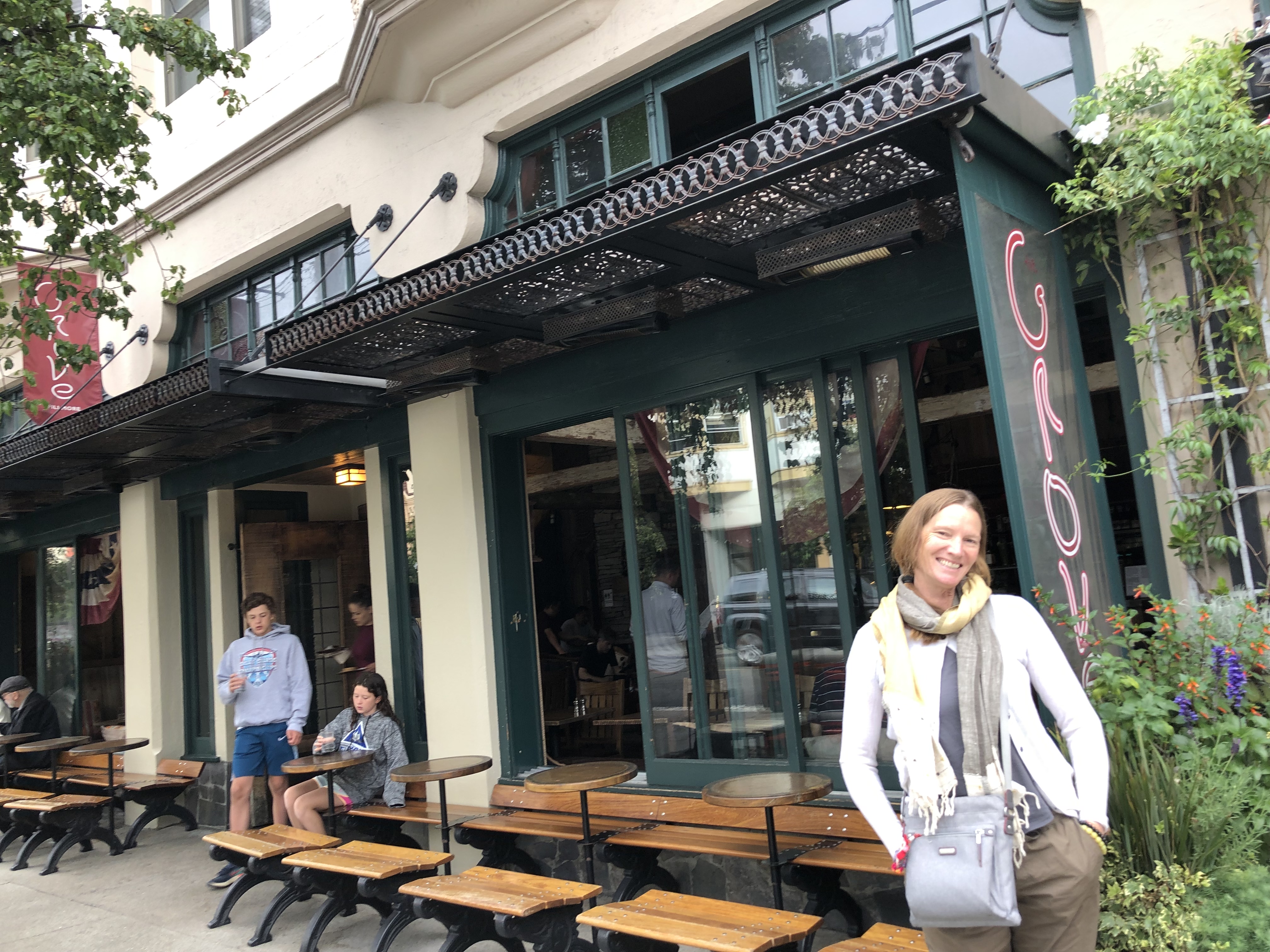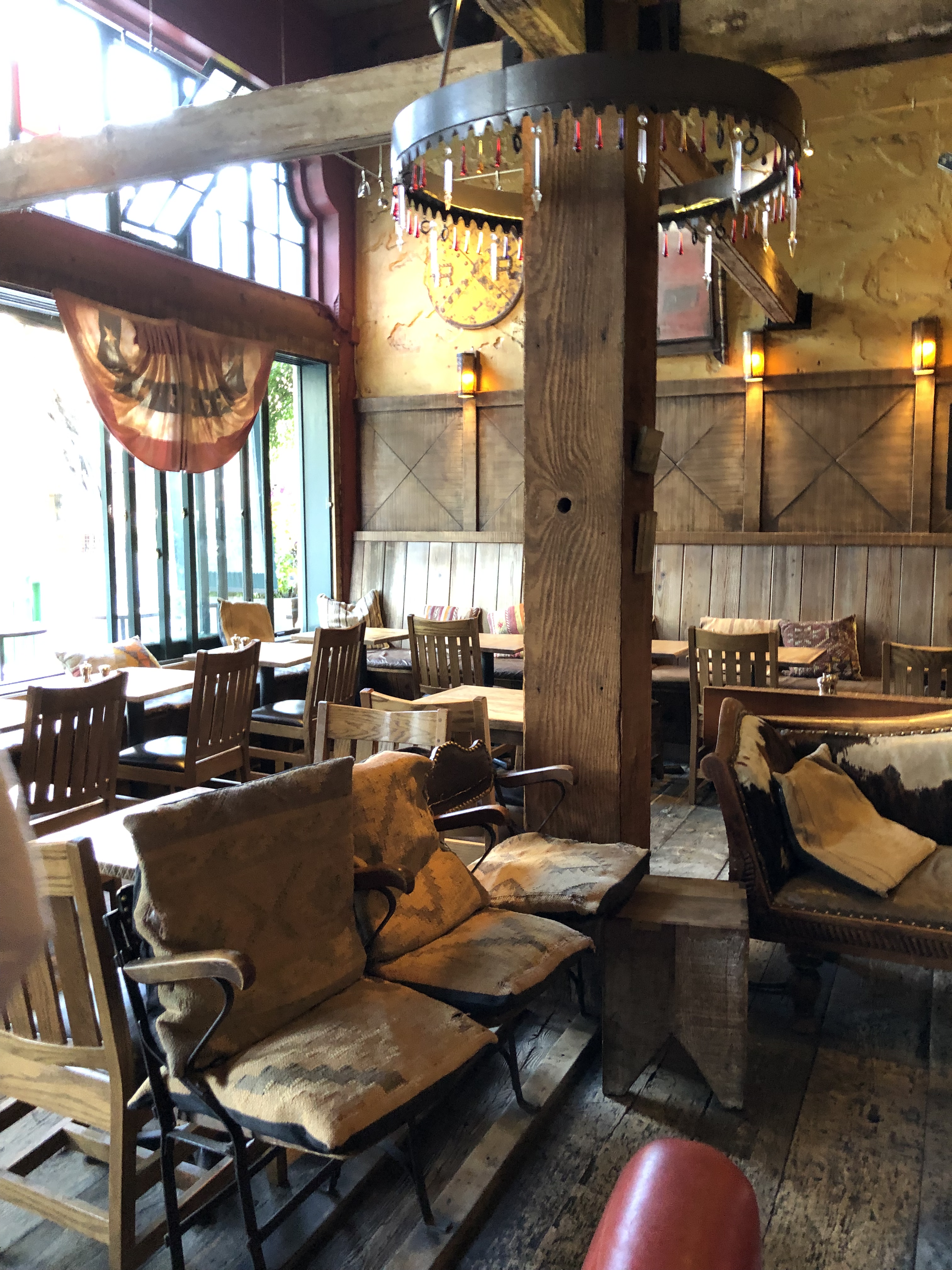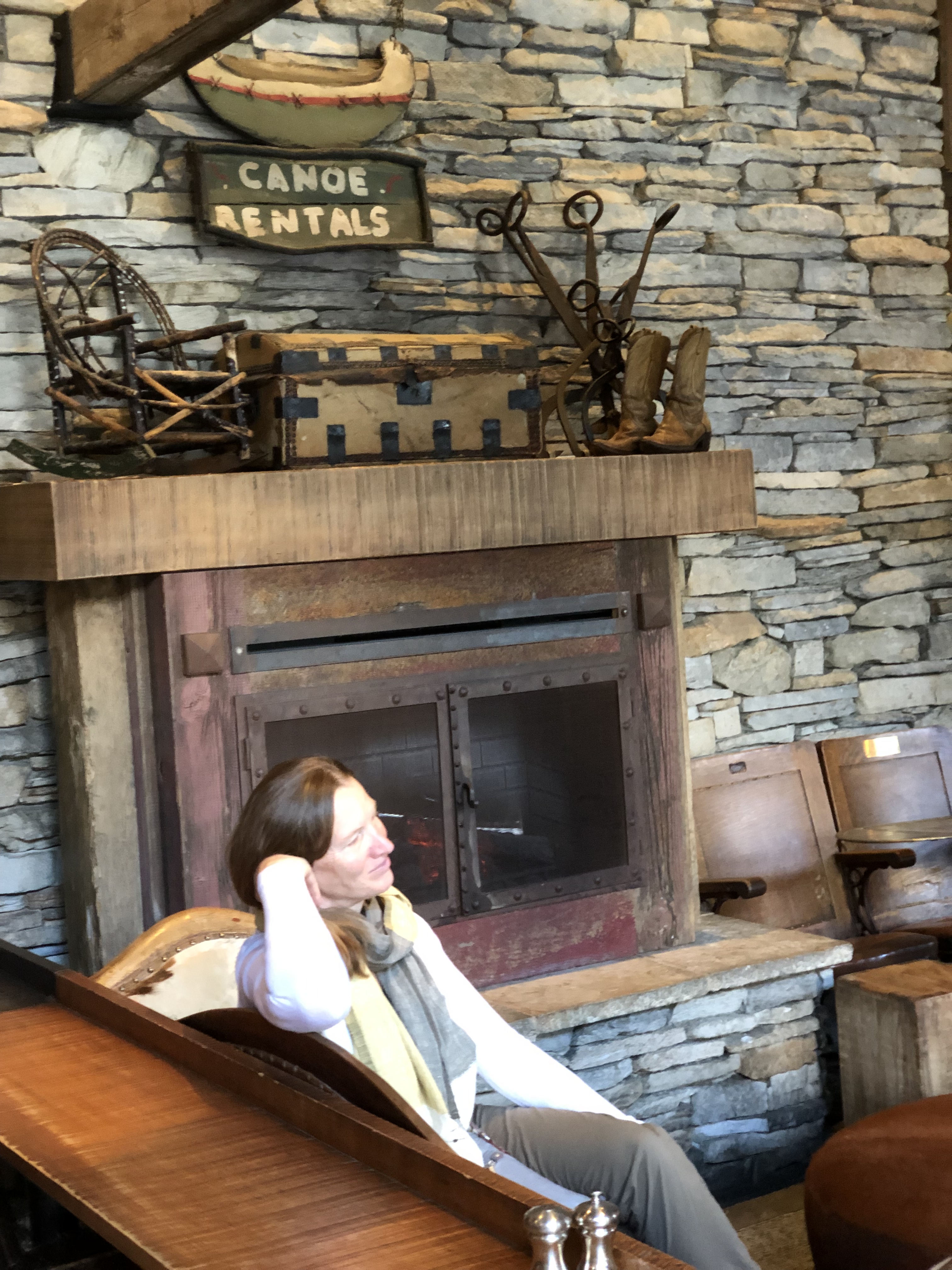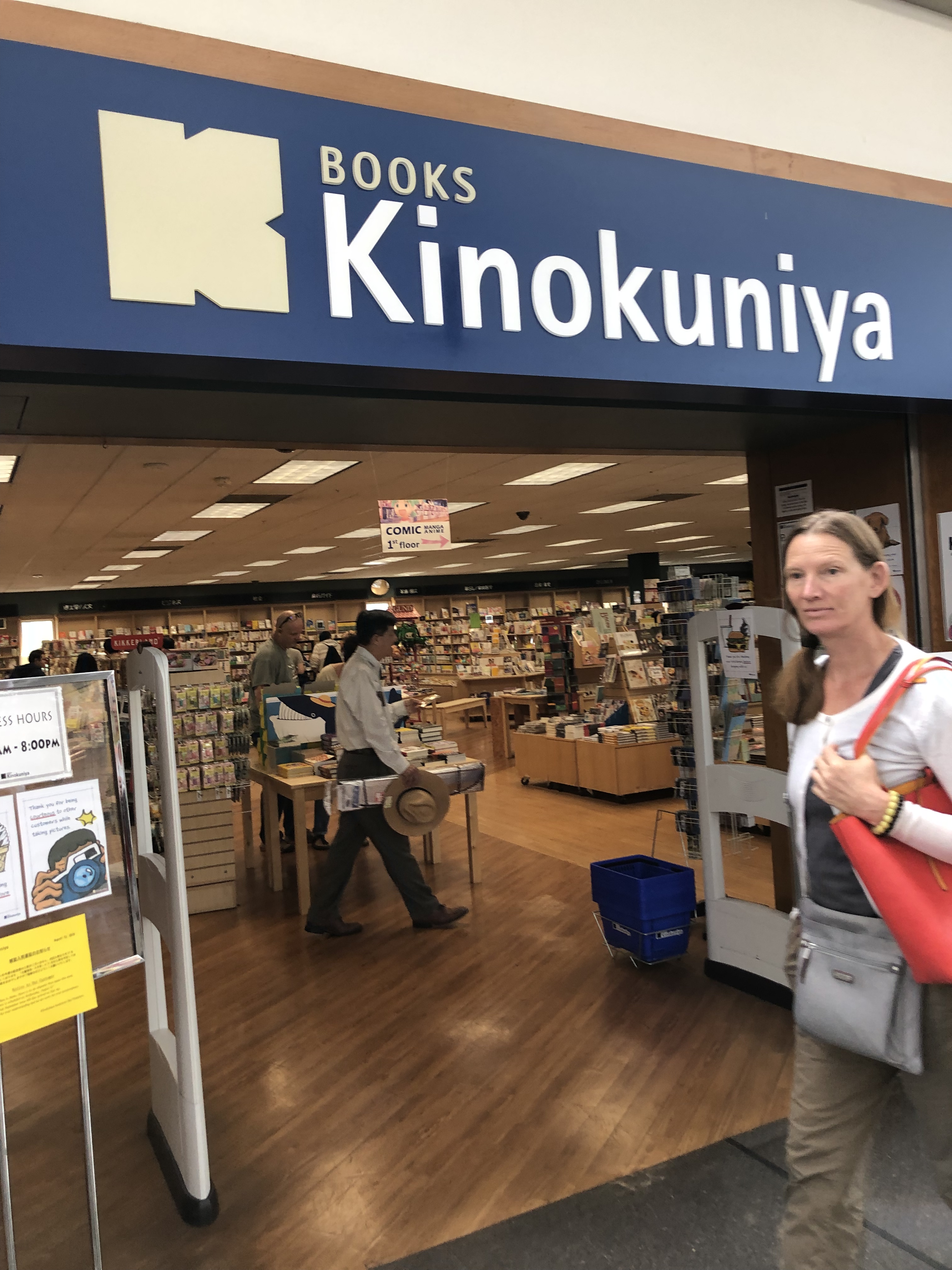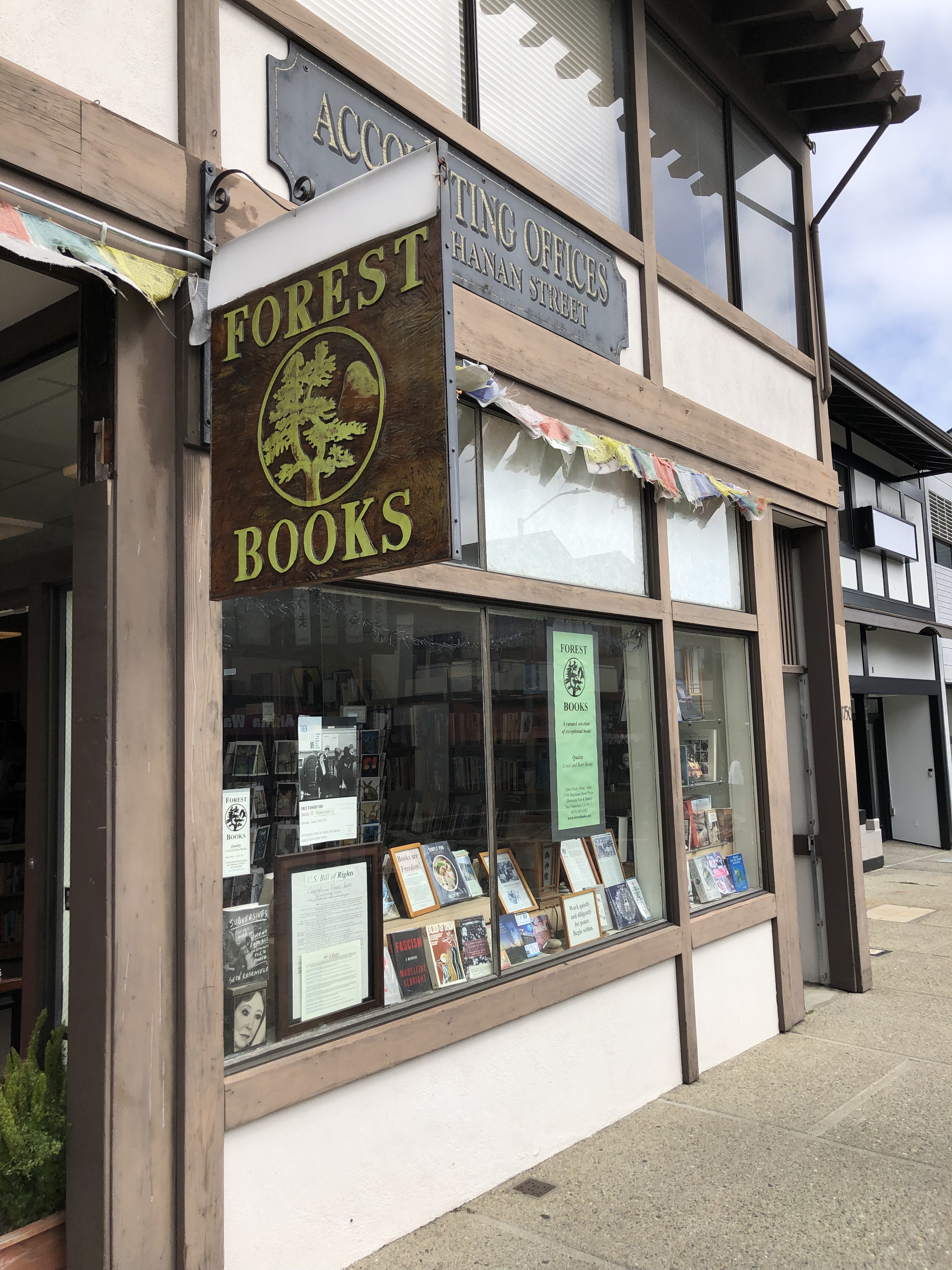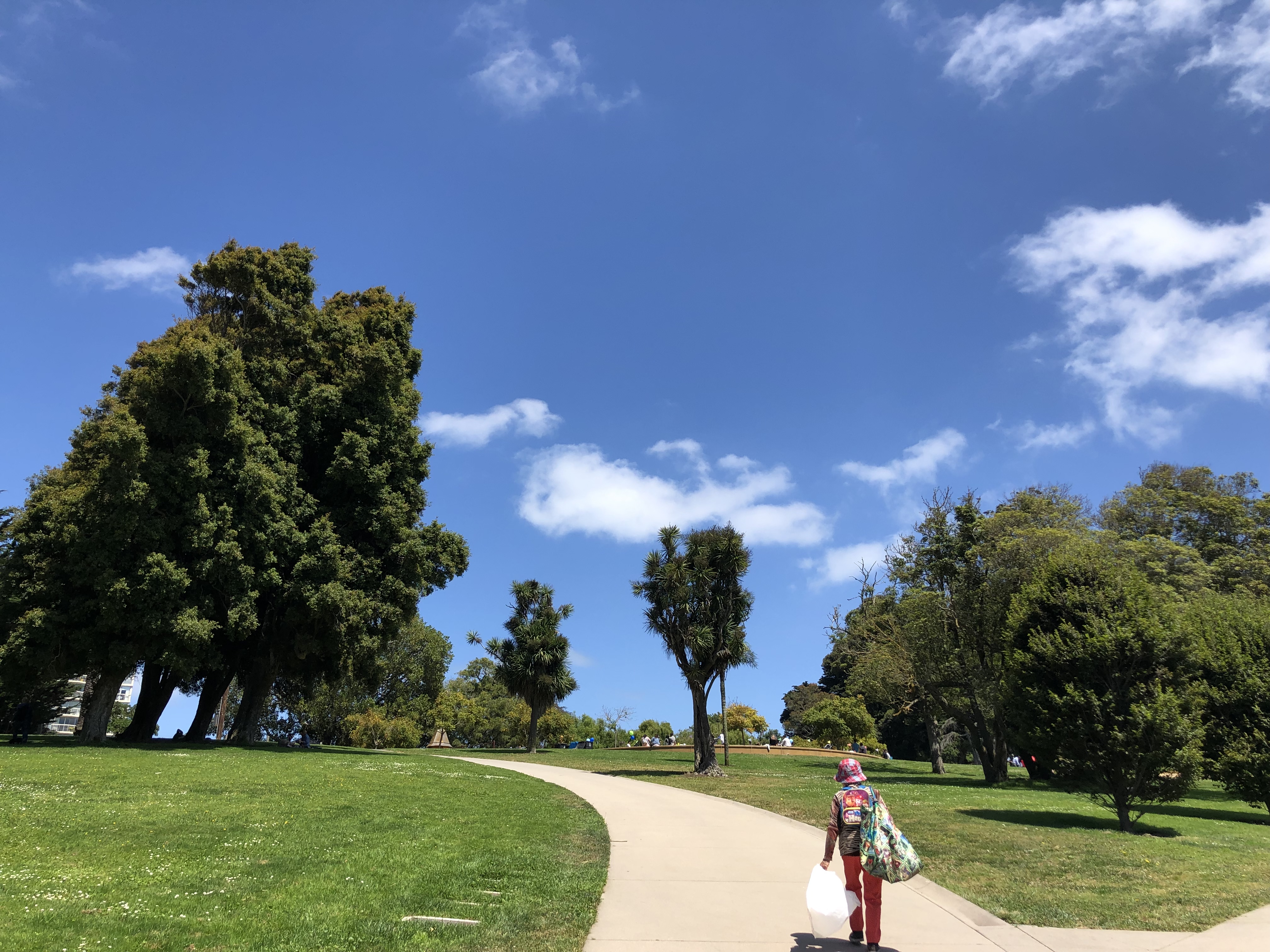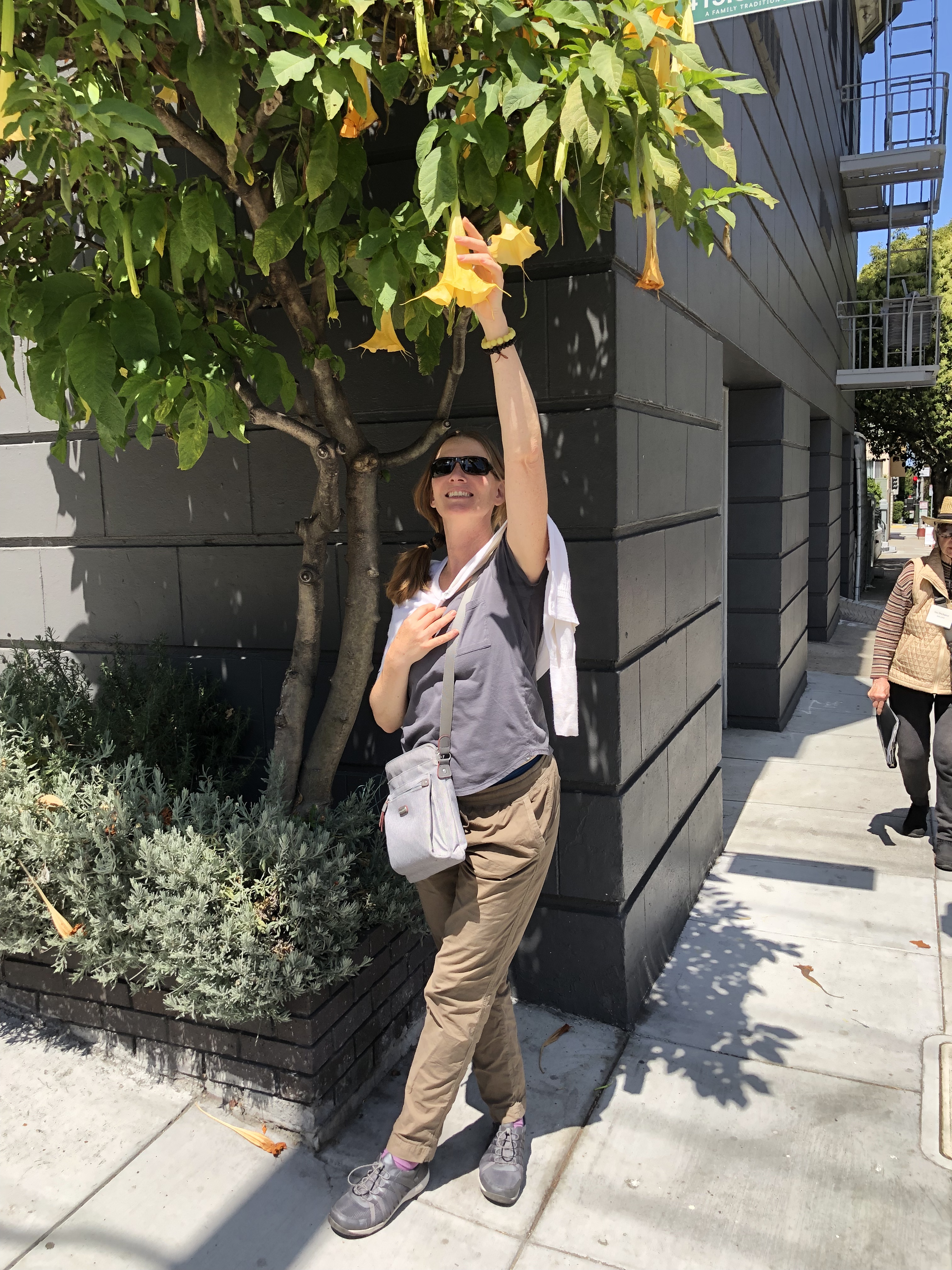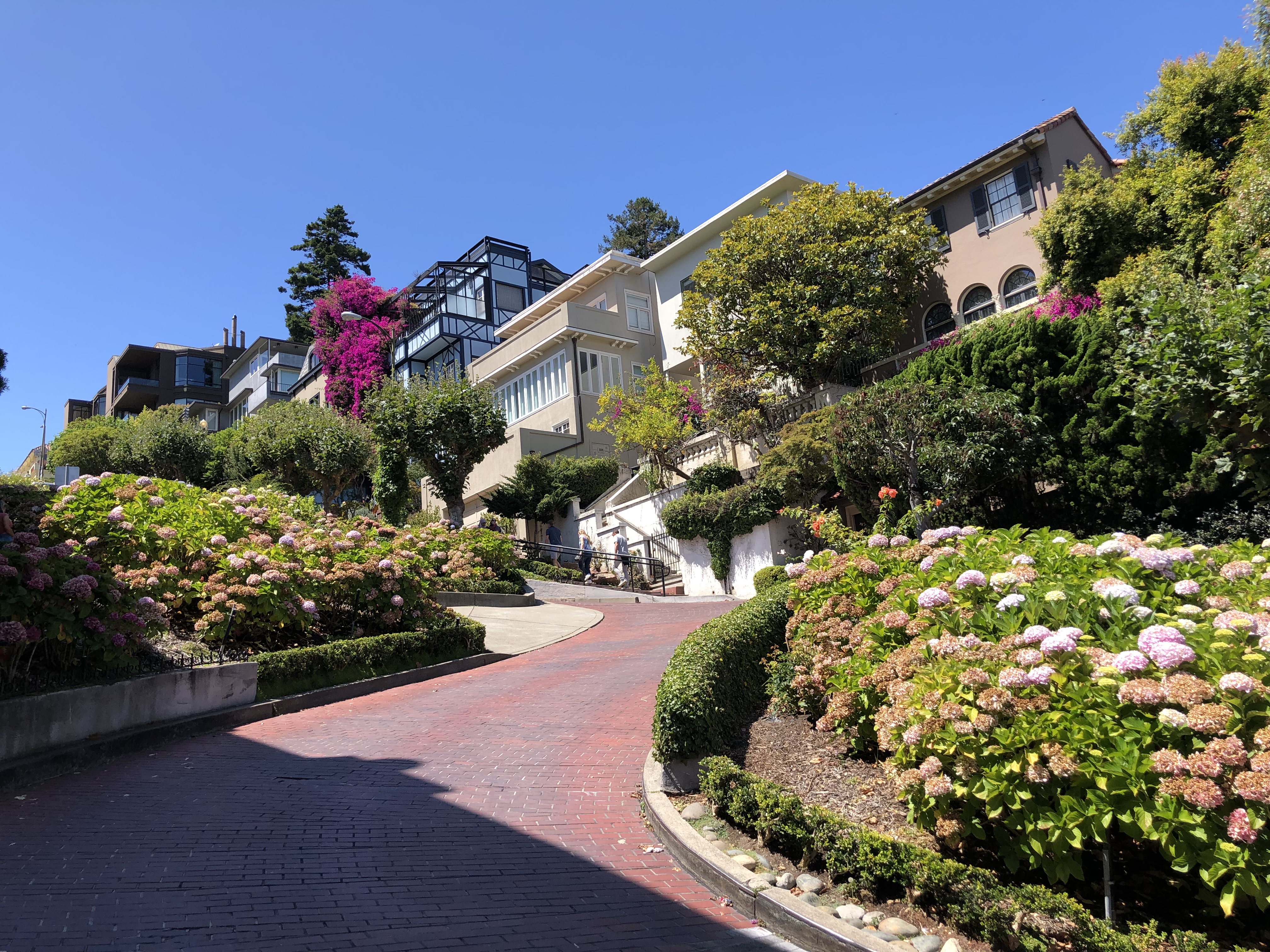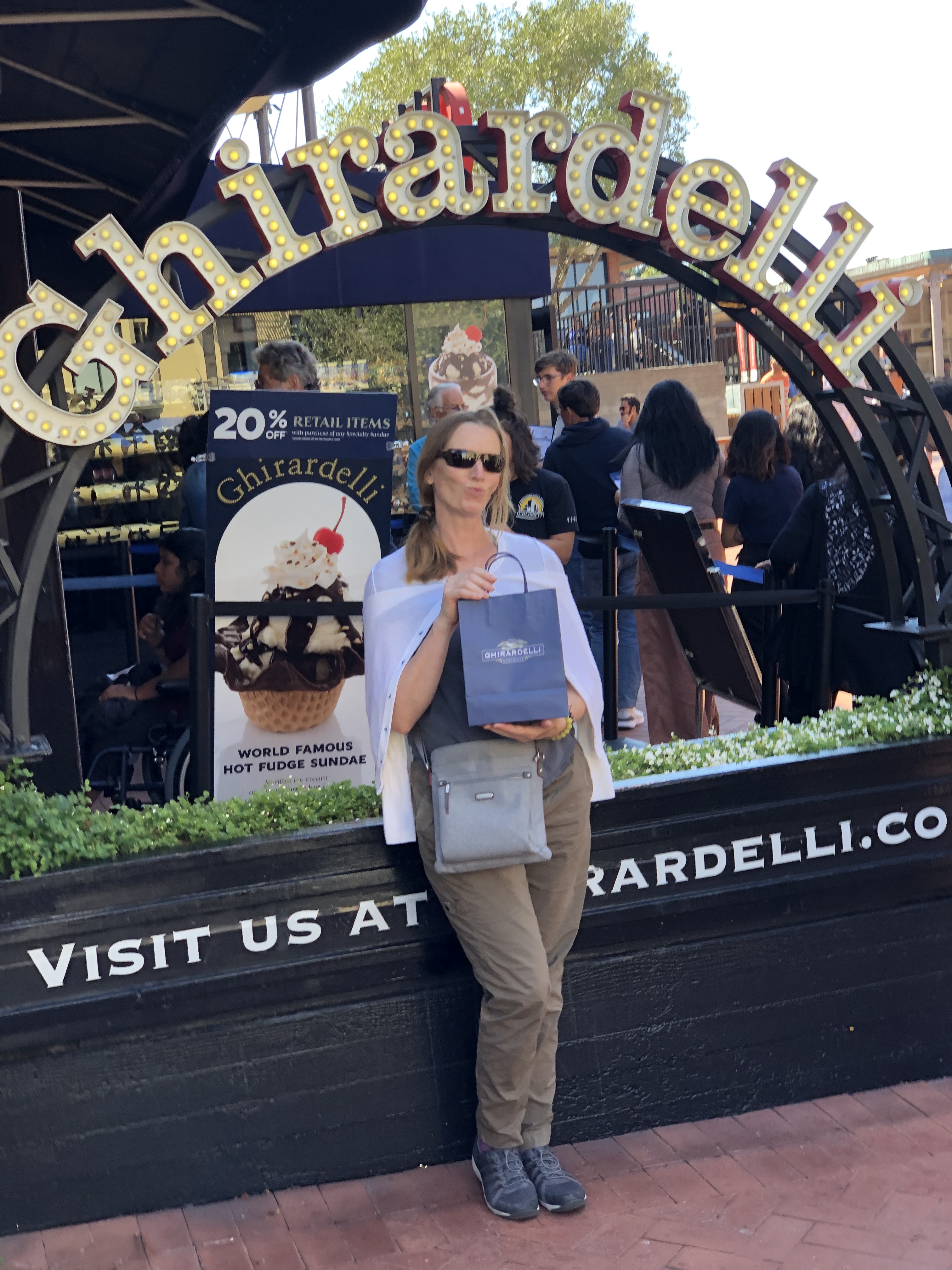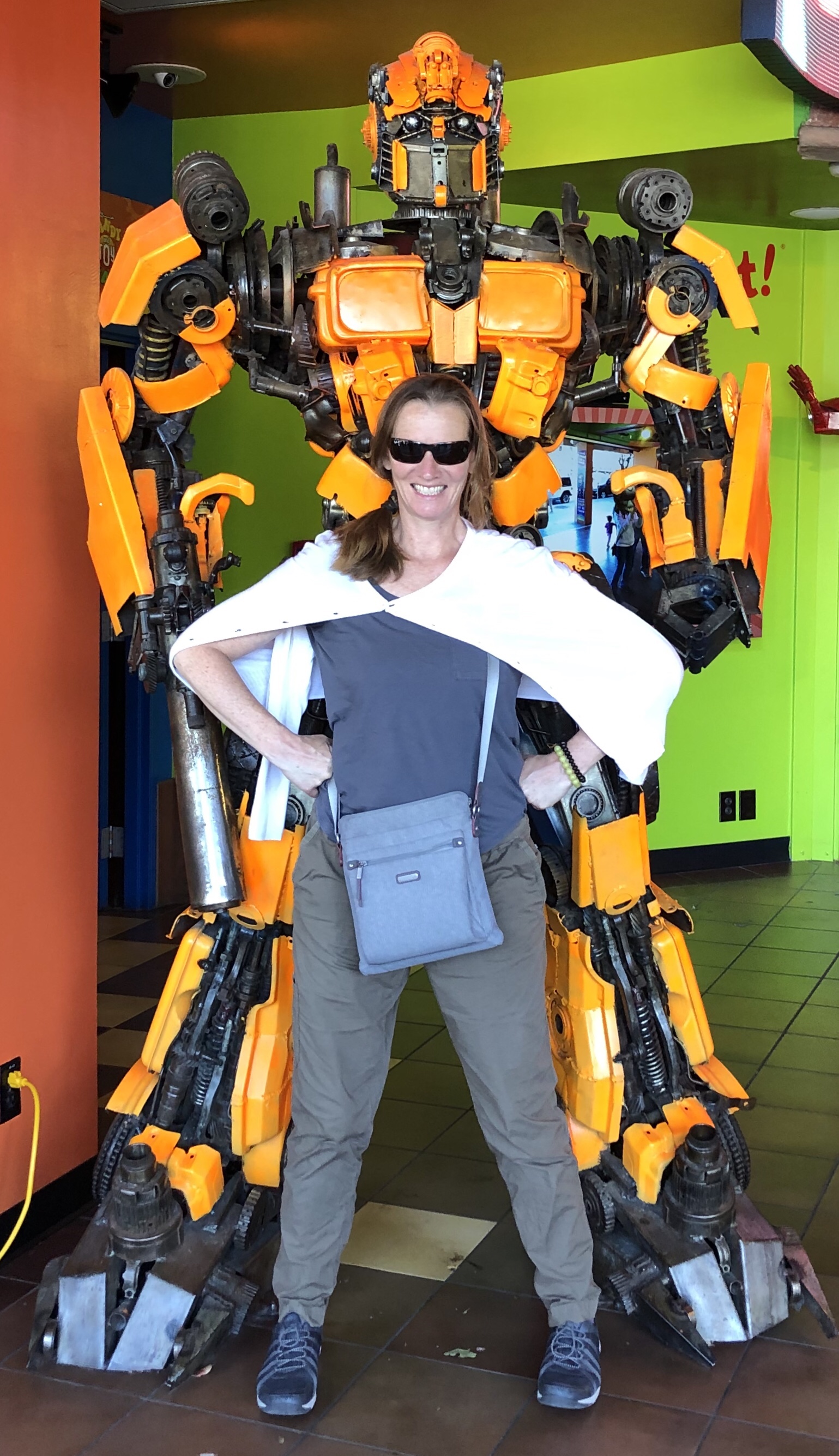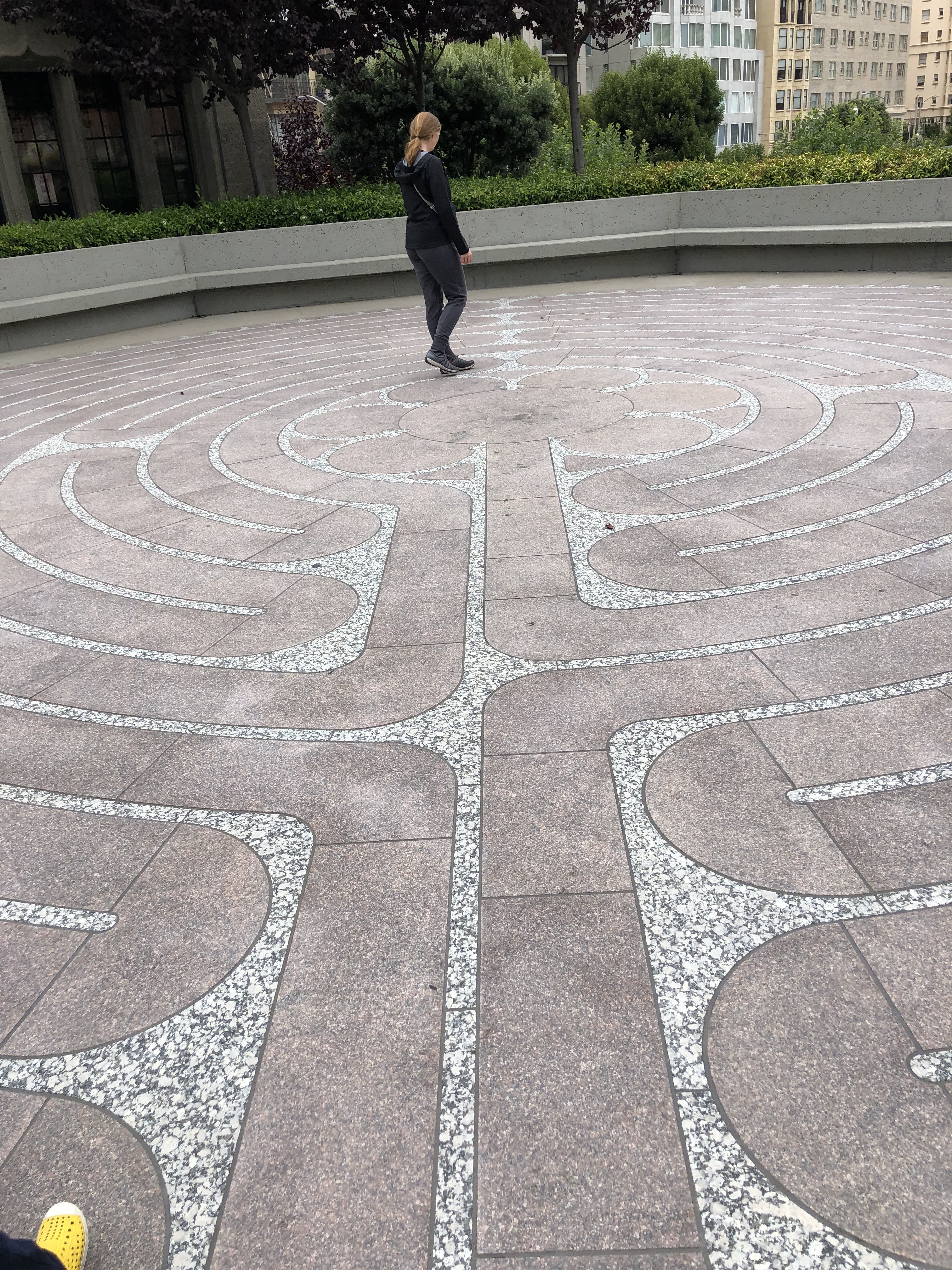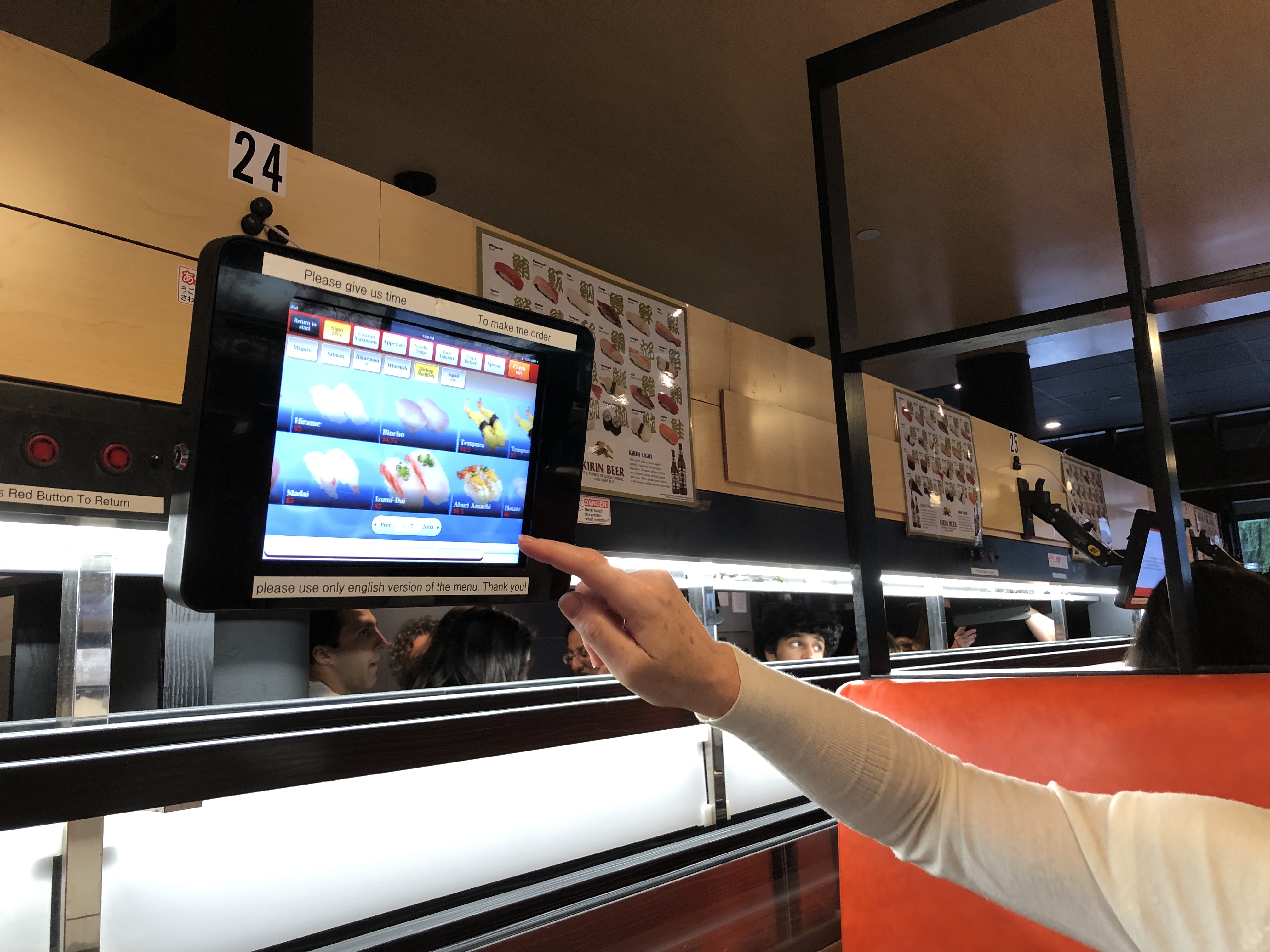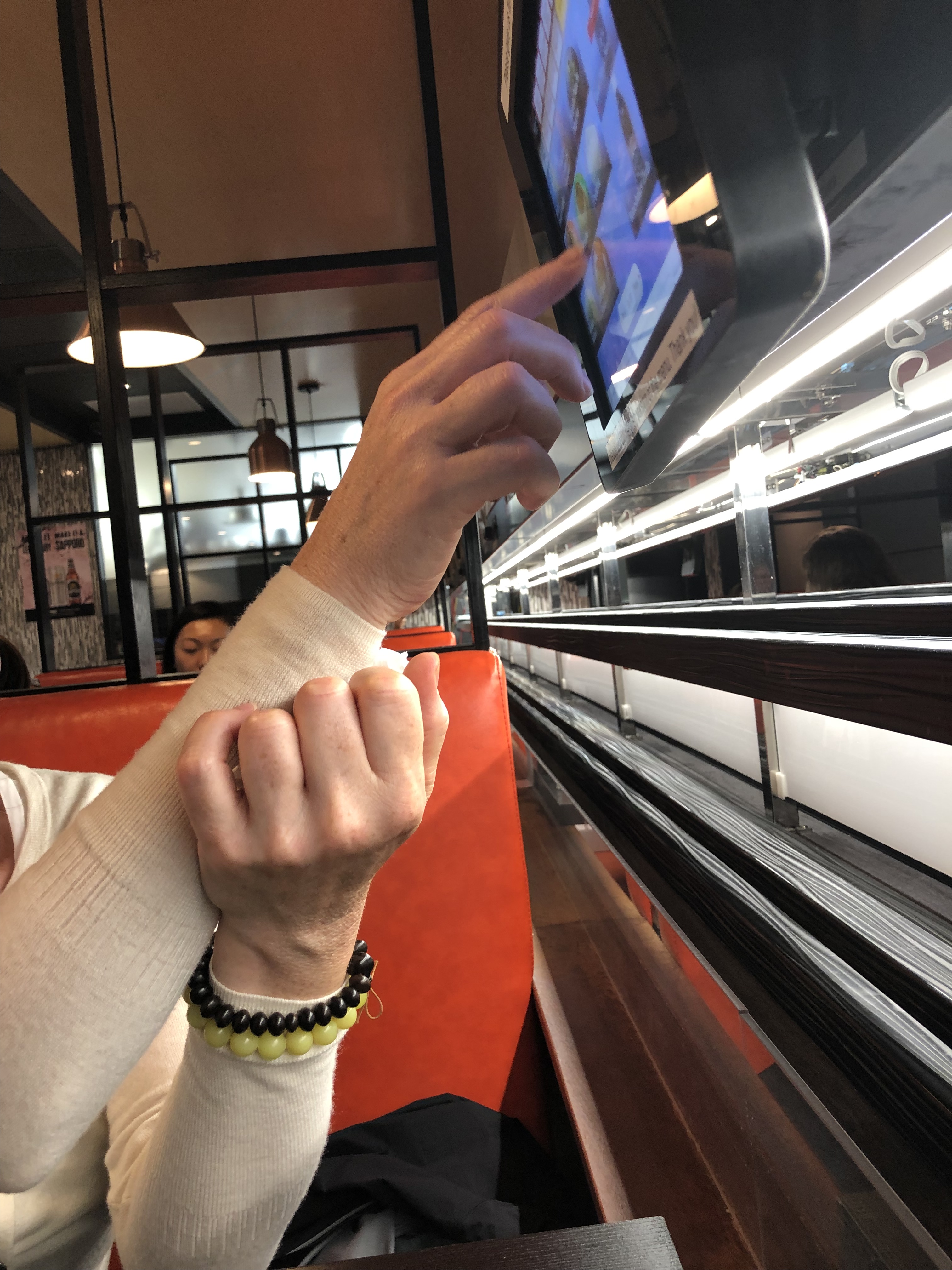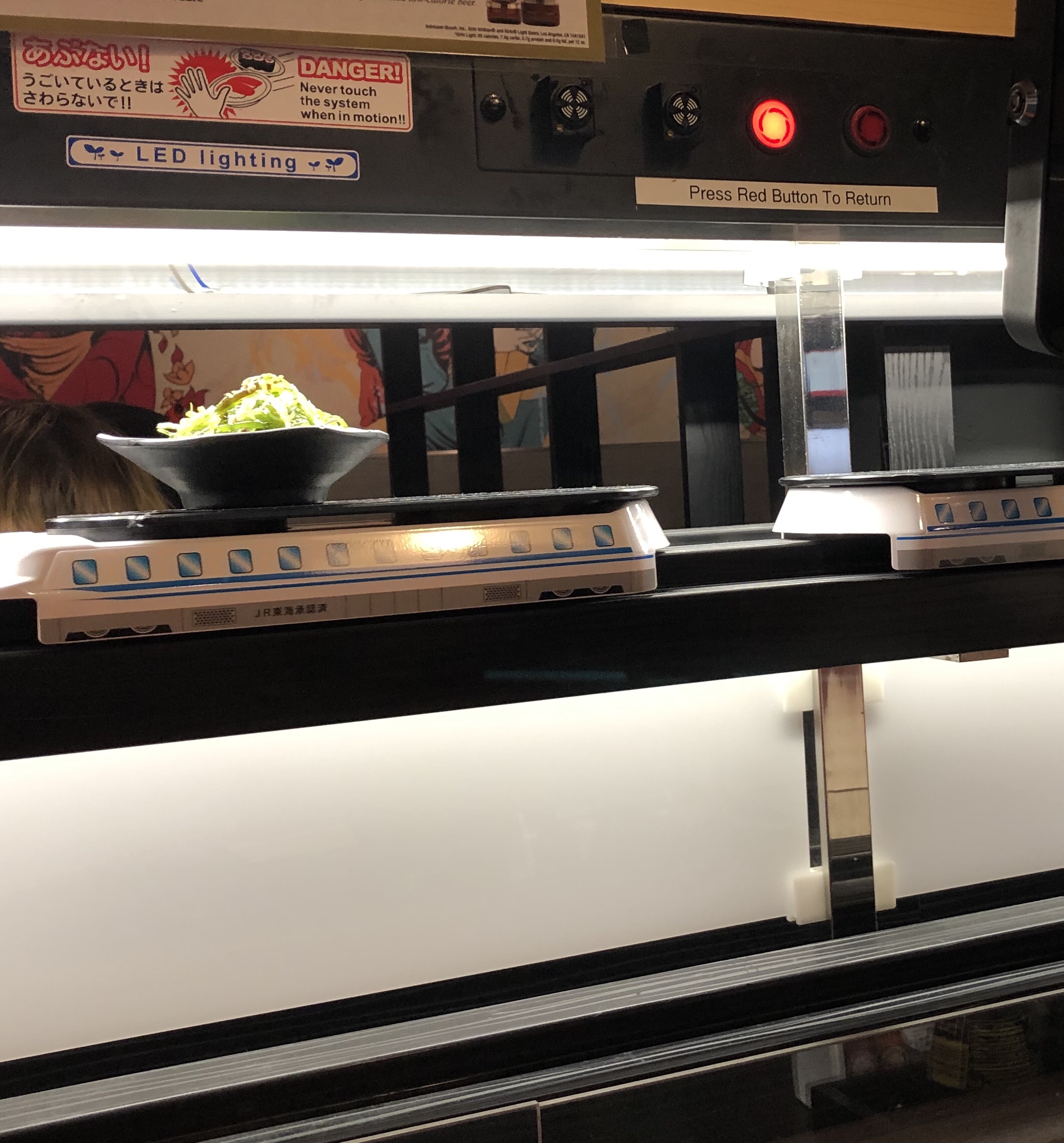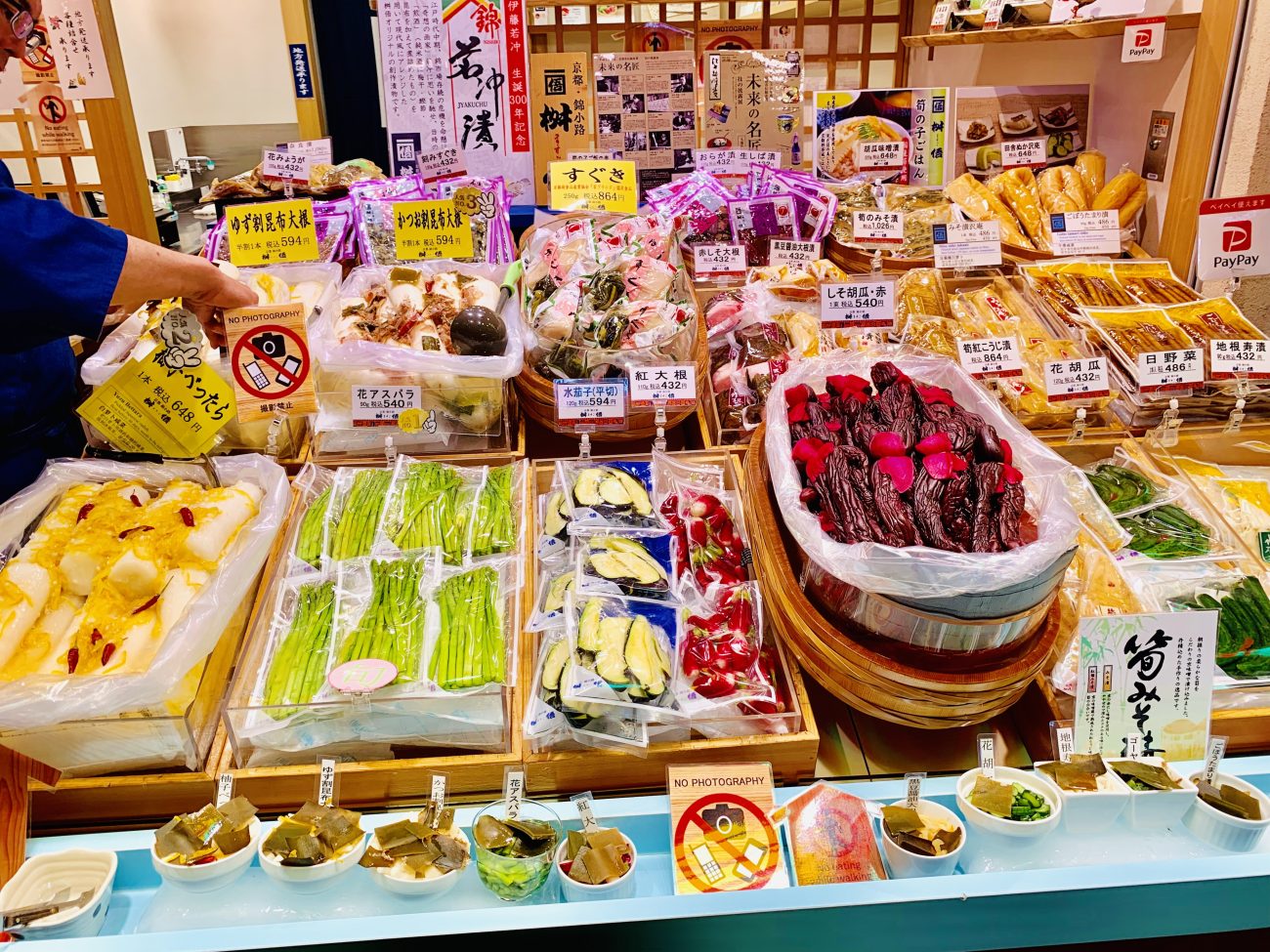We landed in San Francisco to start a two-week loop east to Yosemite, north to Lake Tahoe, west to Calistoga and south to Petaluma in Sonoma County and finally to Spirit Rock Meditation Center in Marin County. The next few blogs will cover each leg of the trip and we’ll start with one of our favorite cities: San Francisco.
Japantown
Where do you stay in San Francisco? There are plenty of big brand hotels in the Union Square area that are close to the action, but we chose Japantown. Again. It’s small, quiet and walkable to many neighborhoods. We had stayed at Hotel Kabuki — which was recently bought by Hyatt — but this time chose the nearby Kimpton Buchanan. And we loved it. We had a spacious corner room on the fourth floor with a beautiful view of Osaka Way, as well as a big soaking tub.
We woke up early Sunday morning to a beautiful day and started early with breakfast at The Grove on Filmore Street. We were the first customers and lounged in the spacious restaurant while we waited. Debbie’s avocado toast with poached eggs on top could not have been better, and Gary’s traditional breakfast with poached eggs and hashed browns with rosemary and toast was just as good. Add a latte and Americano and it was a perfect way to start the day.
We spent the rest of the morning exploring the shops in Japantown, which has been there since 1906 (though rebuilt and changed over the years). The Paper Tree, an origami store, has exhibits of origami art and beautiful paper (washi). It’s not on par with the washi in Japan, but it’s a wonderful visit.
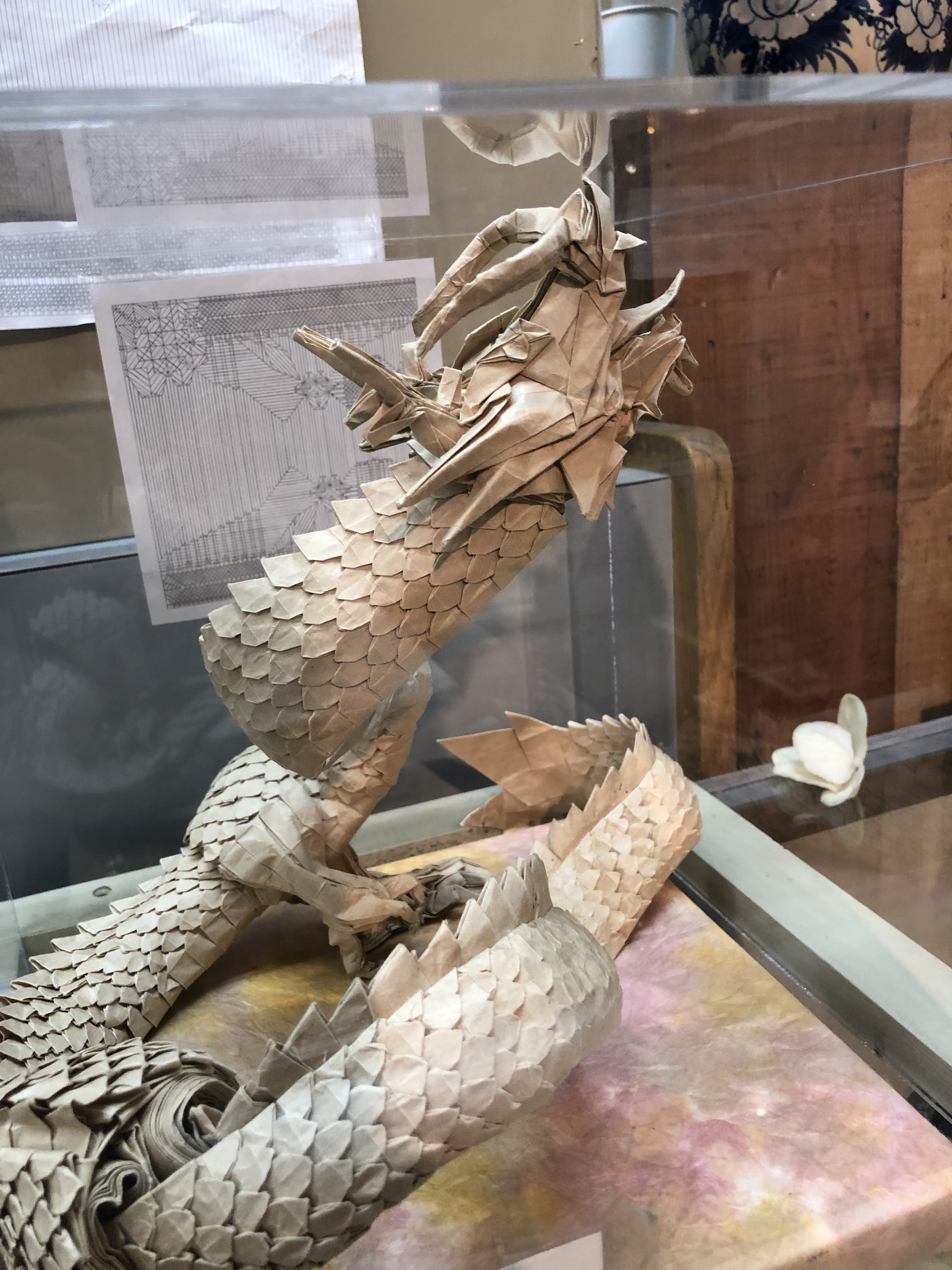
Two bookstores are also worth a visit. Forest Books has a tremendous collection of curated books: rare, used and collectible. And Kinokuniya, which has a dozen locations, mostly on the West Coast, has a great selection of Japanese literature (and manga downstairs if you’re so inclined). It’s located in the Japan Center, an indoor mall which also has restaurants, a couple nice coffee shops, and shops with Japanese candy and tea.
Walking the City
Having visited San Francisco dozens of times, we decided to take advantage of the sun and walk northeast through Lafayette Park and Russian Hill, exploring the architecture, flowers and shrubs, and then stroll down Lombard Street. It was a little more than a mile. From there, we continued on to Fisherman’s Wharf for lunch. It was wall-to-wall people, so we ducked into Franciscan Crab Restaurant to enjoy a view of the bay, crab and Prosecco, and rested before heading back.
We could have taken the cable car up to Nob Hill, but that’s where we were heading in the morning to walk the labyrinth at Grace Cathedral, so we opted to stroll back to Japantown where we rested before dinner. There are plenty of restaurants nearby and we went for Hikari Sushi – known for bullet train sushi. You sit at a counter or booth, order from a touch pad, and food is delivered by a miniature bullet train running along tracks beside you. You just order a little at a time until you’re full. It’s a lot of fun.
And on to Yosemite
The next day it was time to head to the airport, get our rental car and head out to Yosemite.
We’ll start at the end of visit to Kyoto. And the best. Mamecha. Set on a beautiful side street in Gion, the family style restaurant was the top recommendation of our hosts at Old Kyoto, and they were right. Here we discovered why Kyoto is famous for its tofu, enjoying a silken tofu dish that melted in our mouths.

There were several courses, each with a handful of dishes, and from the tofu of our first course to the five-sashimi dish to the delightful tempura to the beef and then the ice cream and cup of matcha, every morsel was delicious.
Getting there: Our wonderful host Junko at Old Kyoto made the reservation, which is recommended, but the sign sits just a foot off the ground on a narrow side street. It’s not easy to find and took us two tries. Just keep your eyes open for a sign with these green marks.

Sake Seconds
We were particularly good at getting lost when looking for restaurants. Addresses are not easy to find, and most restaurants don’t have signs in English. Add a little jet lag to that combination, and you’re happy for a glass of sake and a rice ball (that’s a thing). Then one lucky night we stumbled into a little bar and enjoyed a simple meal, carefully prepared cocktails and sake overflowing in glasses that rested in little wooden boxes. The overflow was “seconds” we were told.

Department Store Dining
We heard about the basement of Takashimaya Department Store, and while the concept sounded odd, we gave it a try. The food turned out to be head and shoulders above any American supermarket with takeout food. Along with sushi and sashimi (that made us wonder what we had been eating all those years in the states), there are endless salads, meats, fresh produce, bakeries, a premium liquor store for sake, wine or whiskey, and more. We found it habit forming – relying on it for three of our eight nights in Kyoto.
Getting There: It’s a big building at the corner of Shijo and Kawaramachi streets in Downtown Kyoto, so it’s easy to find, walkable from Gion and across the street from a train station.
Nishiki Market
And then there is the famous Nishiki Market, where locals, restauranteurs and tourists mingle among more than 125 vendors stretched along pedestrian-only blocks in the middle of Downtown Kyoto. It’s worth a stroll just to marvel at the food. On our first trip, we bought the smoked eel bento and had it for lunch at our guest house. We weren’t disappointed.
Getting There: It’s in the middle of downtown, a block north of Shijo-dori, running from Teramachi to Takakura-dori, and accessible by train from the Karasuma line to Shijo or the Hanku line to Karasuma or Kawaramachi.
